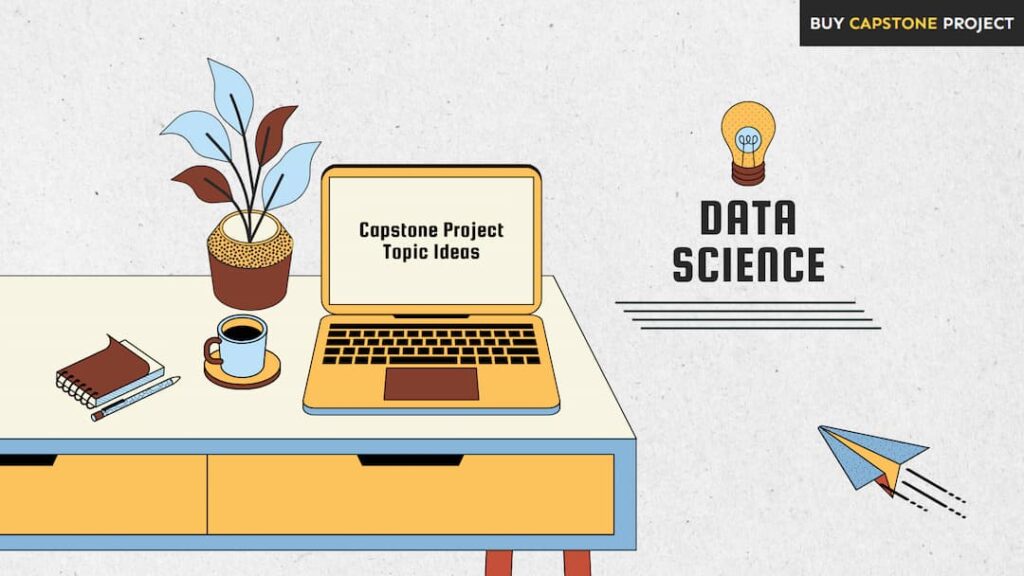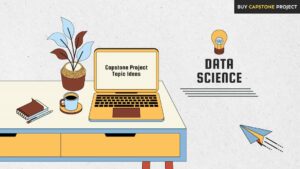TOP 20 Data Science Capstone Project Topic Ideas & RQs
1. Predictive Modeling in Healthcare
Research Question 1:
How can predictive models forecast patient readmission rates?
Overview: Gather historical patient data, develop regression or classification models, and validate results using standard evaluation metrics.
Research Question 2:
What variables are most influential in predicting hospital length of stay?
Overview: Perform feature selection and correlation analysis on clinical and demographic data to identify key predictors.
Research Question 3:
How does the incorporation of time-series data improve healthcare predictions?
Overview: Compare models built with static versus time-series data to assess improvements in prediction accuracy.
2. Natural Language Processing (NLP) for Sentiment Analysis
Research Question 1:
How can sentiment analysis be applied to customer reviews for product improvement?
Overview: Collect review data, use text preprocessing and sentiment classification algorithms, and compare results to manual labels.
Research Question 2:
What role do deep learning models play in enhancing sentiment classification accuracy?
Overview: Implement deep learning models such as LSTM or transformers and compare their performance with traditional methods.
Research Question 3:
How can domain-specific language processing improve sentiment analysis outcomes?
Overview: Tailor NLP techniques to the specific vocabulary of the target domain and evaluate the improvements over generic models.
3. Fraud Detection in Financial Transactions
Research Question 1:
What machine learning methods are most effective in identifying fraudulent transactions?
Overview: Compare supervised and unsupervised learning techniques using transaction datasets and evaluate performance using precision and recall.
Research Question 2:
How does data imbalance affect fraud detection accuracy, and what strategies can address it?
Overview: Experiment with sampling techniques and cost-sensitive learning to improve model sensitivity to rare fraud events.
Research Question 3:
How can anomaly detection algorithms be used to detect emerging fraudulent patterns?
Overview: Develop anomaly detection models and validate them against historical fraud data to assess their ability to spot new patterns.
4. Recommender Systems for E-Commerce
Research Question 1:
How do collaborative filtering and content-based methods compare in recommender system performance?
Overview: Build both types of recommenders, test them on user purchase data, and compare metrics like precision, recall, and RMSE.
Research Question 2:
What techniques improve the cold-start problem in recommendation systems?
Overview: Investigate hybrid methods or demographic-based approaches to generate recommendations for new users or items.
Research Question 3:
How does incorporating user feedback improve recommendation accuracy over time?
Overview: Design a feedback loop for the recommender system and measure changes in recommendation quality using A/B testing.
5. Data Visualization for Decision Support
Research Question 1:
How do interactive dashboards enhance decision-making in business environments?
Overview: Develop dashboards using visualization tools and evaluate user feedback and decision speed improvements.
Research Question 2:
What are the best practices for visualizing high-dimensional data effectively?
Overview: Experiment with dimensionality reduction techniques and assess the clarity of visual outputs in conveying key insights.
Research Question 3:
How can real-time data visualizations be implemented for operational monitoring?
Overview: Design and deploy a real-time visualization system and evaluate its impact on operational efficiency using performance metrics.
Yo, Data Science crew, if your capstone project has you tangled in algorithms and data puzzles, we’ve got your back. Hit us up for a capstone paper writing service that gives your project the boost it needs, so you can chill and focus on crushing your goals!
6. Big Data Analytics with Distributed Systems
Research Question 1:
How do distributed computing frameworks (e.g., Spark, Hadoop) improve the processing of large datasets?
Overview: Compare processing times and scalability of various frameworks using benchmark datasets.
Research Question 2:
What are the trade-offs between batch processing and stream processing in big data analytics?
Overview: Analyze case studies and performance metrics from both methods to identify benefits and limitations.
Research Question 3:
How can data partitioning strategies enhance query performance in distributed systems?
Overview: Test different partitioning schemes on a large dataset and evaluate improvements in query execution time.
7. Social Media Data Analytics
Research Question 1:
How can social media data be used to predict consumer behavior trends?
Overview: Collect and preprocess social media data, develop predictive models, and validate them against real-world trends.
Research Question 2:
What role do network analysis techniques play in understanding information diffusion on social media?
Overview: Use graph analytics to study user connections and the spread of content, measuring metrics like centrality and clustering.
Research Question 3:
How effective are sentiment analysis techniques in forecasting market trends from social media?
Overview: Combine sentiment scores with market data to analyze correlations and test prediction accuracy.
8. Customer Segmentation using Clustering Techniques
Research Question 1:
How do different clustering algorithms compare in segmenting customer data?
Overview: Apply K-means, hierarchical clustering, and DBSCAN on customer datasets, and evaluate cluster quality using silhouette scores.
Research Question 2:
What features best differentiate customer segments in retail data?
Overview: Use feature selection and exploratory data analysis to identify key variables influencing segmentation.
Research Question 3:
How can customer segmentation improve targeted marketing strategies?
Overview: Develop segmentation-based marketing strategies and test their effectiveness through simulated or historical campaign data.
9. Time Series Forecasting for Business Metrics
Research Question 1:
How can ARIMA and exponential smoothing methods be compared for forecasting sales data?
Overview: Develop models using both methods and compare forecast accuracy using metrics like MAE and RMSE.
Research Question 2:
What role do external variables (e.g., promotions, seasonality) play in time series forecasting accuracy?
Overview: Incorporate external factors into models and evaluate improvements in prediction performance.
Research Question 3:
How can deep learning techniques improve traditional time series forecasting methods?
Overview: Implement models like LSTM networks and compare their forecasts against traditional statistical models.
10. Data Ethics and Privacy in Data Science
Research Question 1:
How do current data privacy regulations impact data science practices?
Overview: Review case studies and legal frameworks to assess how regulations like GDPR influence data collection and analysis.
Research Question 2:
What are effective techniques for anonymizing sensitive data while preserving data utility?
Overview: Experiment with different anonymization techniques and evaluate their impact on data analysis accuracy.
Research Question 3:
How can organizations balance the need for data analytics with ethical considerations for privacy?
Overview: Analyze organizational policies and propose frameworks that maintain robust analytics while ensuring data protection.
11. Feature Engineering for Improved Model Performance
Research Question 1:
How do different feature engineering techniques affect the performance of machine learning models?
Overview: Compare models built with raw data versus engineered features and measure improvements using evaluation metrics.
Research Question 2:
What role do domain-specific features play in enhancing model accuracy?
Overview: Identify and incorporate domain knowledge into feature creation and test their effect on model outcomes.
Research Question 3:
How can automated feature selection techniques reduce model complexity without sacrificing accuracy?
Overview: Apply automated methods like recursive feature elimination and compare results to manual feature selection processes.
12. Natural Disaster Prediction and Risk Analysis
Research Question 1:
How can historical weather and seismic data be used to predict natural disasters?
Overview: Build predictive models using historical datasets and validate the models using recent disaster events.
Research Question 2:
What factors contribute most significantly to the prediction of disaster events?
Overview: Perform feature importance analysis to determine which variables have the highest predictive power.
Research Question 3:
How can data visualization improve the communication of natural disaster risks to communities?
Overview: Develop visualizations that effectively display risk levels and forecast data, then assess usability through surveys.
13. Market Basket Analysis for Retail Data
Research Question 1:
How can association rule mining reveal purchasing patterns in retail data?
Overview: Apply algorithms like Apriori on transaction datasets and analyze discovered rules to identify common item groupings.
Research Question 2:
What metrics best evaluate the strength of associations in market basket analysis?
Overview: Use support, confidence, and lift metrics to measure rule strength and compare across different datasets.
Research Question 3:
How can market basket analysis be integrated into recommendation systems for retail?
Overview: Combine association rules with recommendation algorithms and evaluate the impact on user purchase behavior.
14. Image Recognition and Computer Vision
Research Question 1:
How do convolutional neural networks (CNNs) perform on image classification tasks compared to traditional methods?
Overview: Train and test CNN models on standard image datasets and compare performance using accuracy and F1-score.
Research Question 2:
What techniques improve object detection accuracy in cluttered environments?
Overview: Experiment with various CNN architectures and post-processing methods to enhance detection in complex scenes.
Research Question 3:
How can transfer learning accelerate model development in computer vision tasks?
Overview: Fine-tune pre-trained models on domain-specific datasets and measure improvements in training time and accuracy.
15. Reproducibility and Transparency in Data Science
Research Question 1:
How can version control systems improve reproducibility in data science projects?
Overview: Implement and document version control practices in a project, then evaluate their impact on project management and collaboration.
Research Question 2:
What tools and practices promote transparency in data science workflows?
Overview: Explore notebooks, documentation standards, and open-source platforms, then assess their adoption in case studies.
Research Question 3:
How does reproducibility impact the credibility of data-driven research findings?
Overview: Review published studies and attempt to replicate results to measure the effect of reproducibility on research trustworthiness.
16. Social Network Analysis and Community Detection
Research Question 1:
How can graph algorithms be used to identify communities within social networks?
Overview: Apply community detection algorithms like Louvain or Girvan-Newman to social network data and evaluate the coherence of detected clusters.
Research Question 2:
What are the key network metrics that indicate influential nodes within a community?
Overview: Calculate centrality measures (degree, betweenness, eigenvector) and correlate them with known influence indicators.
Research Question 3:
How can network visualization techniques improve the understanding of social interactions?
Overview: Develop visualizations for social network graphs and assess their effectiveness in conveying insights through user studies.
17. Data Cleaning and Preprocessing Techniques
Research Question 1:
How do various data cleaning techniques affect the performance of predictive models?
Overview: Compare models trained on raw data versus cleaned data to measure the impact on accuracy and robustness.
Research Question 2:
What are the most common challenges in preprocessing large, unstructured datasets?
Overview: Analyze case studies and datasets to identify issues like missing values and inconsistencies, then propose standardized solutions.
Research Question 3:
How can automated data preprocessing pipelines improve efficiency in data science projects?
Overview: Develop a pipeline that incorporates automated cleaning and feature engineering, and evaluate its impact on project turnaround time.
18. Recommendation Systems for Content Delivery
Research Question 1:
How do collaborative filtering and hybrid recommendation models compare in content delivery?
Overview: Build and test recommendation systems using both methods on user engagement data, and compare their performance metrics.
Research Question 2:
What role does user behavior analysis play in improving recommendation accuracy?
Overview: Analyze clickstream or browsing data to extract behavioral features and assess their contribution to recommendation quality.
Research Question 3:
How can real-time user feedback be integrated into adaptive recommendation systems?
Overview: Develop a prototype system that updates recommendations based on live user input and measure the improvements in user satisfaction.
19. Geospatial Data Analysis for Urban Planning
Research Question 1:
How can geospatial data be used to optimize public transportation routes?
Overview: Analyze geographic and demographic data to model and evaluate improvements in route efficiency and service coverage.
Research Question 2:
What are the key factors influencing urban growth patterns as identified through geospatial analysis?
Overview: Use spatial statistical methods to correlate urban development with factors such as population density and infrastructure availability.
Research Question 3:
How can interactive geospatial visualizations support urban planning decisions?
Overview: Develop visualization tools that allow planners to explore spatial data and assess the tools through user feedback and case studies.
20. Sentiment Analysis and Public Opinion Mining
Research Question 1:
How do different text mining techniques affect the accuracy of public opinion mining from social media?
Overview: Compare methods such as bag-of-words, TF-IDF, and word embeddings in classifying sentiment on social media posts.
Research Question 2:
What is the impact of sarcasm and irony on sentiment analysis outcomes?
Overview: Analyze datasets with annotated sarcastic content and test model adjustments to improve detection accuracy.
Research Question 3:
How can sentiment trends over time be used to forecast shifts in public opinion?
Overview: Develop time-series models that correlate sentiment analysis results with key events and validate forecasts against real-world outcomes.







